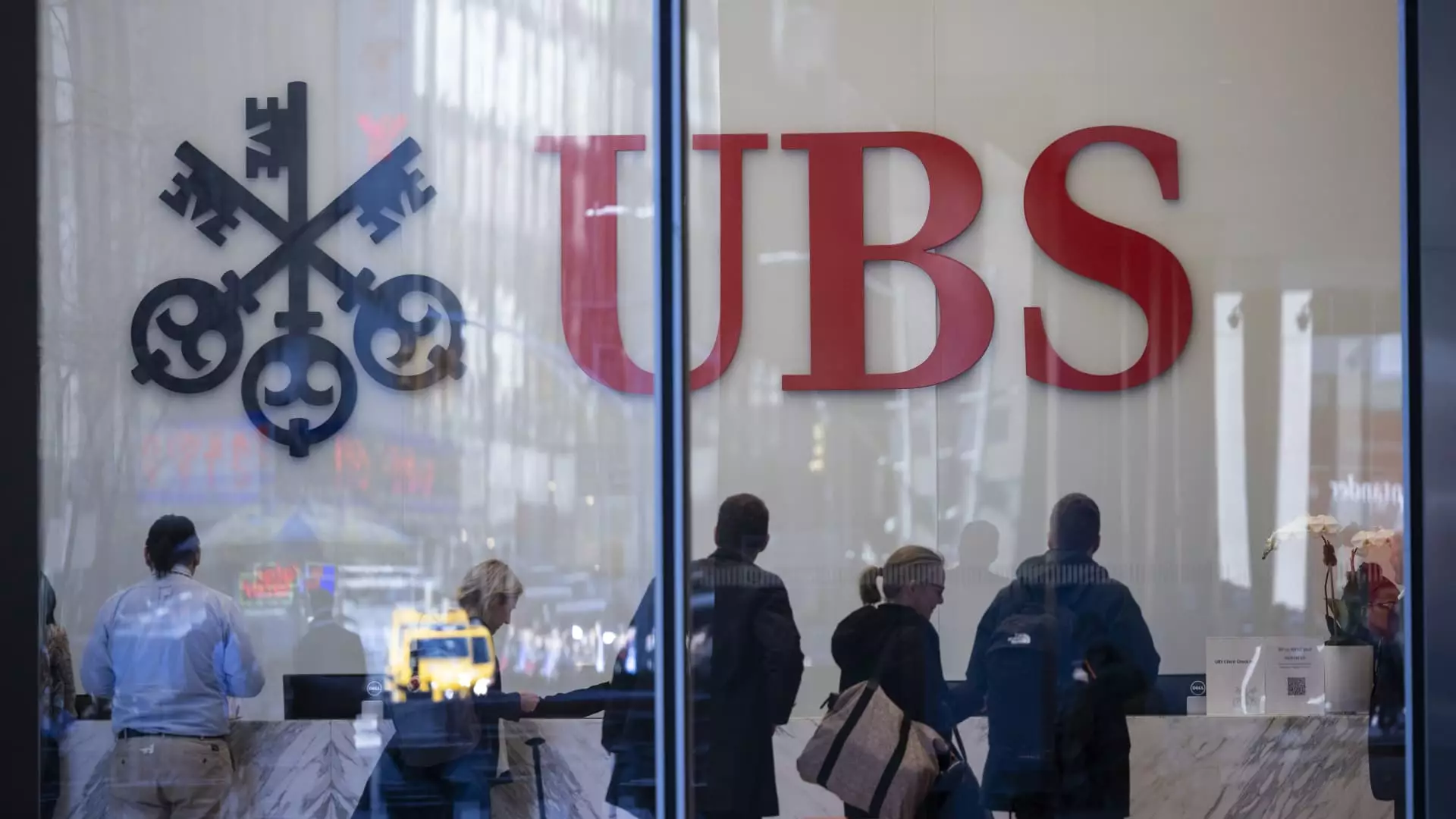Switzerland’s banking powerhouse, UBS, showcased resilience and financial fortitude in its latest quarterly report, achieving a net profit attributable to shareholders of $1.43 billion. This result starkly outperformed analyst expectations—a mean forecast of $667.5 million as captured in an LSEG poll, indicating a remarkable 114% earnings surprise. With a group revenue of $12.33 billion, UBS surpassed the anticipated $11.78 billion, propelling the bank into a favorable position amidst ongoing industry challenges and its recent merger activities.
The bank’s achievements in the third quarter were not just numerical; they hinted at a robust internal restructuring following the substantial integration challenges posed by the acquisition of the now-defunct Credit Suisse. The operating profit before tax showed a transformative narrative, rebounding to $1.93 billion from a loss of $184 million during the same period last year. Such a turnaround is indicative of UBS’s strategic maneuvers and operational efficiencies post-merger.
A critical performance metric, return on tangible equity (ROTE), rose to 7.3%, up from 5.9% in the previous quarter, showcasing enhanced operational leverage. Conversely, the common equity tier 1 (CET1) capital ratio dipped slightly to 14.3% from 14.9%, reflecting the bank’s balancing act between maintaining capital strength and pursuing growth opportunities.
UBS also has ambitious plans for capital returns to shareholders, planning to conclude a $1 billion share repurchase program within the current quarter and aiming for continued buybacks into 2025. Such initiatives hint not only at confidence in sustained profitability but also reflect a commitment to shareholder value amidst the turbulence of financial integration.
Interestingly, the Investment Banking division stood out with a spectacular 36% year-on-year increase in net income. The performance was attributed primarily to favorable conditions in equity derivatives, alongside revenues from foreign exchange and interest rates. Additionally, the bank reported growth within its Global Banking segment, positioning itself strategically in lucrative market sectors. While the Global Wealth Management arm, however, faced a 6% decline, attributed to shrinking deposit margins and lower loan revenues, this aspect underscores the challenges of a competitive and evolving banking landscape.
Despite these hurdles, UBS is firmly committed to achieving its outlined $13 billion savings target arising from the Credit Suisse integration by 2026, with cumulative gross savings expected to hit $7 billion by the end of 2024. This financial discipline is essential for enhancing overall margins and fostering a more resilient business model.
Navigating Geopolitical Landscapes and Market Varibility
As UBS maneuvers through this landscape of financial integration, the company contends not only with the internal ramifications of merging operations but also external factors such as geopolitical tensions and interest rate fluctuations. Political events, such as the imminent U.S. elections and ongoing global conflicts, potentially affect client behaviors and market dynamics.
CEO Sergio Ermotti faces a pivotal challenge: steering UBS’s future amidst these complexities while competing against formidable U.S. rivals like Goldman Sachs and Morgan Stanley, who are experiencing double-digit profit growth. The macroeconomic conditions in Switzerland—a strong franc paired with low inflation rates—present both opportunities and challenges. The Swiss National Bank’s policy maneuvers in this context will be critical for the profitability of domestic banks, including UBS.
Despite the potential challenges posed by geopolitical disturbances, UBS reported strong client engagement, with market fluctuations fostering a backdrop of increased activity. As mentioned in their statement, a delicate balance exists with ongoing volatility and a clouded global economic outlook. The bank remains optimistic about prospects of stability in the U.S. economy which could alternatively spark constructive market conditions, even as it remains vigilant against external shocks.
As UBS progresses forward, its recent performance reveals a bank in recovery mode—navigating the intricacies of integration while capitalizing on growth opportunities. With strategic initiatives aimed at enhancing profitability and expediting operational efficiencies, UBS embodies a potential blueprint for resilience in modern banking, setting its future trajectory while watching the world stage closely.


Leave a Reply